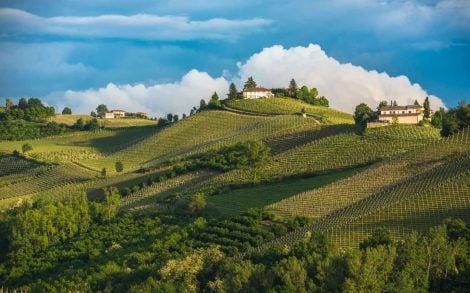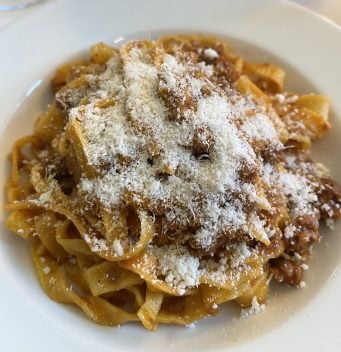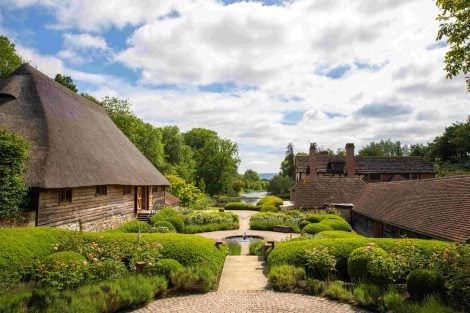When, leaving Padua heading southwest, you leave the flat plain behind, a regular, geometrically cultivated landscape, suddenly strange elevations appear on the horizon. Not mountains, yet not simple hills either: isolated, conical, dark and wooded rises that stand like sentinels over the plain.
The Euganean Hills, an ideal microclimate for vines
These are the Euganean Hills, which distinguish themselves from other Venetian hill systems due to their volcanic origin, as do other areas particularly suited to vine cultivation, such as the zones of Mount Etna, Vesuvius, and the Phlegraean Fields.
Returning to the Euganean Hills, between 35 and 30 million years ago, powerful magmatic forces emerged through the Earth's crust, creating isolated elevations with basaltic and calcareous soils. These soils are today among the main allies of local viticulture: deep, rich in minerals, capable of retaining moisture even during the driest months and, at the same time, highly draining. The lithological differences between effusive origin areas and sedimentary areas create a pedological mosaic that directly reflects in the sensory profile of the wines. The variable altitudes, strong thermal excursions, and constant ventilation create an ideal microclimate for vine cultivation. It is not surprising, therefore, that viticulture here has roots dating back to ancient times.
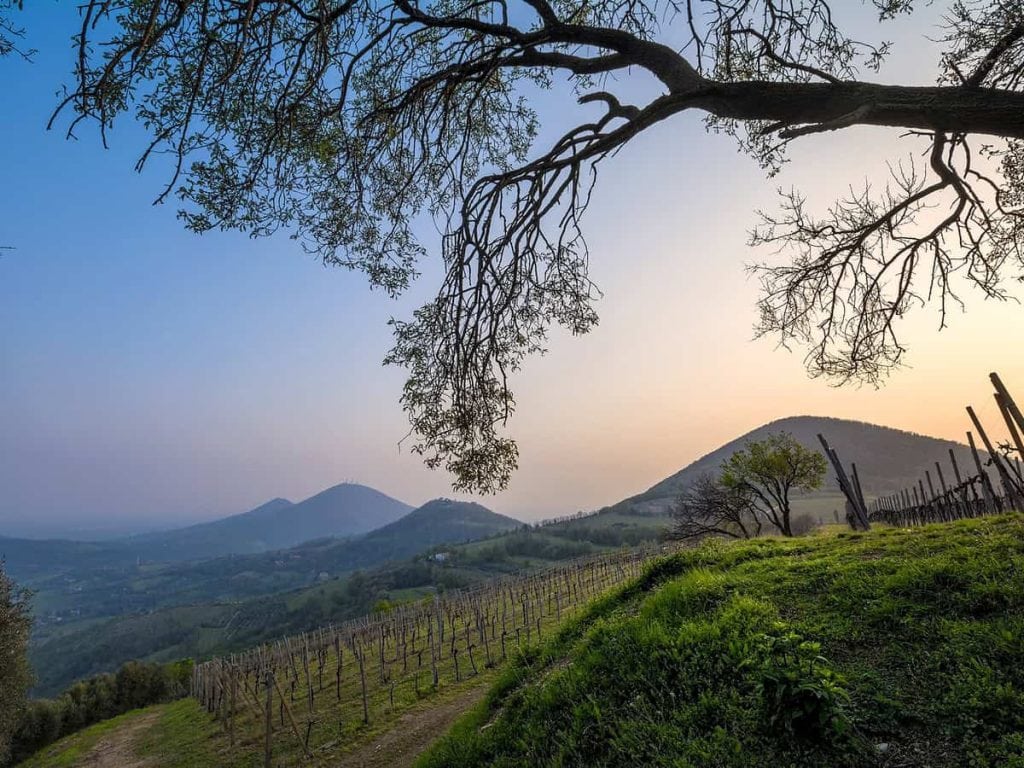
Euganean Hills, the denomination and wines produced
The area has been protected by a denomination since 1969, specifically Colli Euganei, which in the Fior d’Arancio type, based on yellow muscat grapes, even achieved DOCG status in 2011. However, according to various historical sources, the first vineyards date back to pre-Roman times; it was with the Romans that viticulture took a central role in the agricultural management of the territory, as evidenced by numerous archaeological finds and citations from Latin authors, first and foremost Pliny the Elder.
Over the centuries, the grape varieties cultivated in the Euganean Hills have evolved, selected not only according to taste but also based on pedoclimatic adaptation. Among the grape varieties that best express the identity of the territory, yellow muscat stands out, the absolute protagonist of the Fior d’Arancio DOCG. Likely brought during the Middle Ages by Benedictine monks, this variety has found in the Euganean slopes an ideal habitat to express its fragrance in dry, raisin, or sparkling versions. The resulting wines combine citrus and floral notes with vibrant minerality, making them unique within the Italian muscat panorama.
Alongside muscat, international varieties coexist, having deeply rooted themselves in the local landscape to the point of acquiring distinctive traits. Merlot and cabernet sauvignon, introduced between the late 19th and early 20th centuries, have found a second home here, thanks to the volcanic soil’s ability to moderate vigour and concentrate aromas. This results in elegant reds, often aged in wood, capable of long ageing. Carmenère, long confused with cabernet franc, has also found in the Euganean Hills one of its most authentic expressions in Italy.
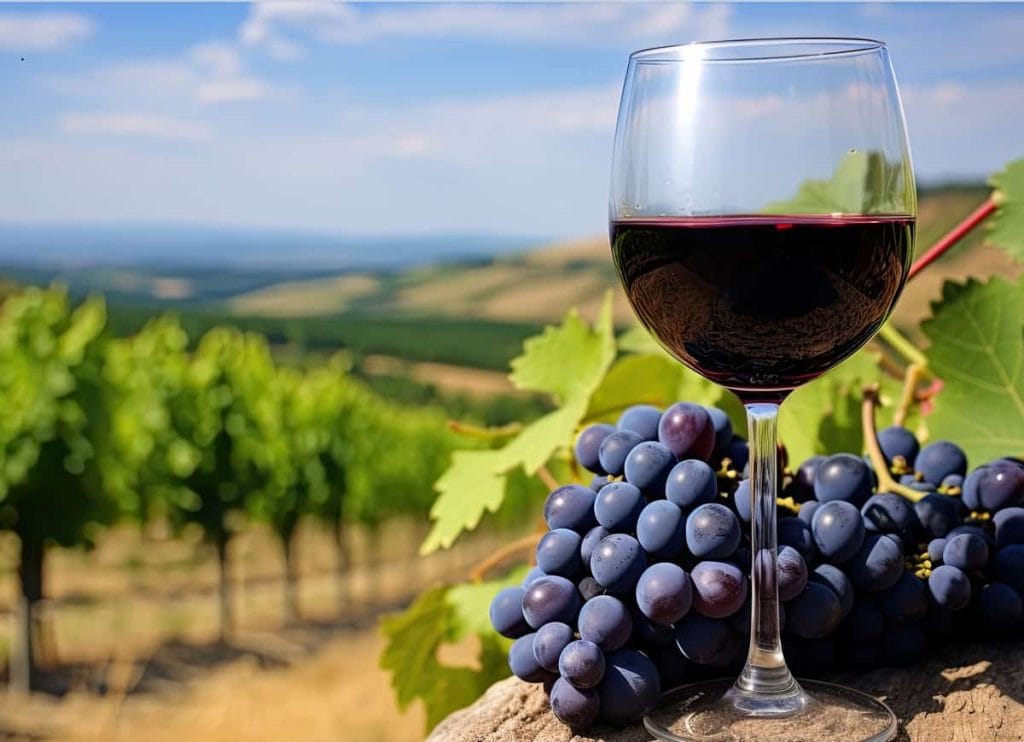
Euganean Hills, revival and rediscovery
Today, the Euganean Hills are experiencing a phase of revival and rediscovery. A greater awareness of the territory’s qualitative potential has led many producers to invest in zoning, sustainable viticulture, and the promotion of crus.
Wine tourism, linked also to the spa and cultural circuit (Arquà Petrarca, Este, Abano Terme), represents a strategic lever for promoting local wines, especially among the new generations of consumers, who are increasingly sensitive to themes of authenticity, biodiversity, and geological origin.
The market is rewarding this rediscovered identity. Reds from merlot and cabernet, when well communicated, are finding growing success in international markets, where demand for wines from volcanic soils is constantly rising. Fior d’Arancio, especially in its raisin version, has won over a niche of enthusiasts seeking high-quality sweet wines, while the dry version is even surprising the most sceptical palates.

The best value wines from the Euganean Hills
In the following list you will find some of the best wine expressions from the Euganean Hills, all labels reviewed in the Berebene 2025 and Vini d’Italia 2025 guides by Gambero Rosso.
The Merlot Foscolo 2022 from Borin Vini & Vigne is one of the reds offered by the Monselice-based winery, run confidently by Francesco and Gianpaolo with the precious collaboration of their parents Gianni and Teresa. Monticelli is one of the eastern gateways to the Euganean complex, a sort of wide plain that quickly narrows and rises into the articulated volcanic hill system. The vineyards are partly developed in this area, but for the best vineyard sites, one must climb the folds of Arquà, where the red grape varieties of Bordeaux origin are mainly found.
Ca’ Lustra has been operating for almost half a century in the Euganean Hills, today led by siblings Marco and Linda Zanovello, with about 25 hectares scattered in the southern area of the Hills, producing wines rich in character and nuance. Here we highlight the Moro Polo 2021 red, from merlot and cabernet, for its excellent value for money.
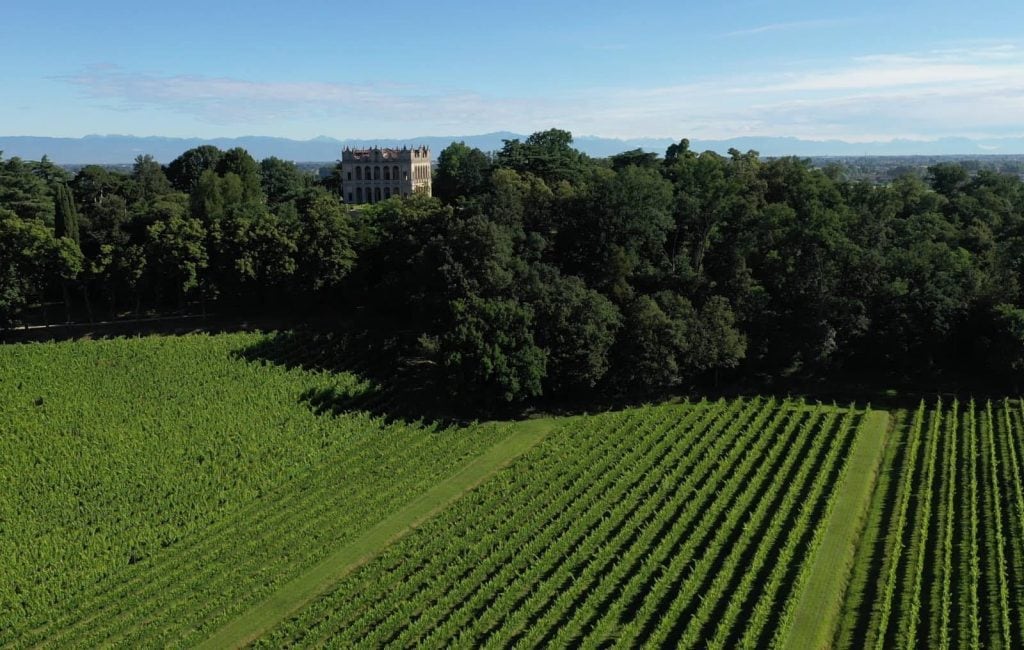
photo: www.facebook.com/lamontecchia/
The Euganean complex stretches from north to south for just about twenty kilometres, but in this area, the climate varies significantly. The winery of Giordano Emo Capodilista is structured over two different vineyard sites: the first in the Selvazzano area, at the northern extremity of the denomination, mainly hosting merlot, carmenère, and white grape varieties; the second in Baone, where cabernet sauvignon reigns supreme. Here we highlight the Fior d’Arancio Spumante Dolce for its excellent value for money.
The southern part of the Euganean complex has long been recognised as one of Italy’s cradles of cabernet, a grape that has occupied the best exposures here for almost two centuries. Low yields in the vineyard and maturation in cement tanks produce a glass with almost explosive fruit on the nose, where plum is fleshy and sweet; on the palate, the wine’s sunny fullness is brightened by smooth tannins. Although the Euganean complex is located just a few kilometres from Padua, its climate is Mediterranean in nature, highlighted by the presence of broom, prickly pear, and strawberry tree, increasingly evident as you move southwards. At the extreme southern end is Filò delle Vigne, a winery that has interpreted this climate with productions of great character and maturity. Here we highlight the Cabernet Cecilia di Baone Riserva 2021 for its excellent value for money.
The Rosso Infinito 2020 by Elisa Dilavanzo from the Maeli winery is a Bordeaux blend, with a slight prevalence of cabernet franc, appreciated for its rich fruity impressions preceding a richly textured palate, finding structure in its tannic presence.
The Euganean Hills span 19,000 hectares south of Padua, a dense weave of hills formed by submarine volcanic movements. Here, Raffaele and Paola Cristofanon manage the family business Montegrande Cristofanon with the precious collaboration of the new generation. The Borgomoro, a blend of cabernet sauvignon and franc, stands out for its clear fruitiness and dynamic palate driven by its acidity.
Colli Euganei Cabernet Borgomoro 2022 – Montegrande Cristofanon
The Monte Versa hill is a gentle ridge extending westward in the southernmost part of the Euganean Hills. It’s a densely planted area, characterised by a particularly warm climate ideal for Bordeaux varieties. Here is located the Monteversa winery of the Voltazza family, structuring their vineyards with the south-facing slopes dedicated to heat-loving varieties and the north-facing slopes to white grapes. Here we highlight the Versacinto 2021 for its excellent value for money.
The southern area of the Euganean Hills has a warm and dry climate that differs markedly from surrounding areas. Here, Bordeaux red grapes ripen consistently and the most attentive producers craft wines of great character. Among them are Sergio Fortin and Roberto Dalla Libera, who with Il Mottolo have created one of the region’s most interesting wineries. The Serro 2021 is a Bordeaux blend mainly of merlot that captivates with its wide aromatic range, where fruit dominates but leaves room for herbal notes, graphite, and an intriguing note of macerated leaves. On the palate, it is full, juicy, and highly satisfying.
This year, many convincing wines were presented by the Gardina family of Quota 101, among which the Ortone 2020 red stands out, a Bordeaux blend predominantly of merlot with intense aromas of plum and cherry, and a subtle herbal vein in the background. On the palate, the warmth of the territory emerges in a full and juicy sip, capable of accompanying even longer-cooked meats.
The Tre Frazioni 2021 by Reassi is a Bordeaux blend predominantly cabernet sauvignon of good richness and harmony. The Bonato family has been cultivating vines in the Euganean Hills for generations, but it was in the early 1990s that the winery took on its current form. A handful of hectares dedicated to viticulture and olive growing on the western slopes of the Euganean complex, mainly hosting Bordeaux varieties, which colonised these lands over a century ago, but also almost forgotten native varieties like pinella and turchetta.
The Cabernet Rittochino 42 by Turetta Ca’ Bianca plays less on fruit power and more on the tension of the sip. The 2019 harvest brought fragrant fruit aromas refreshed by intense balsamic notes, also found on the palate, where the wine stretches nimbly, closing with a lovely aniseed memory. The Turetta family’s winery is located on a small flat stretch immersed in the Euganean Hills, precisely between the village of Cinto and Mount Cucuzzola. Surrounding it are vineyards quickly climbing the hillsides, alternating with patches of woodland, creating a landscape of rare beauty where human presence is not dominant. The production focuses on Padua classics, with particular attention to the time needed for the wines to reach perfect harmony.
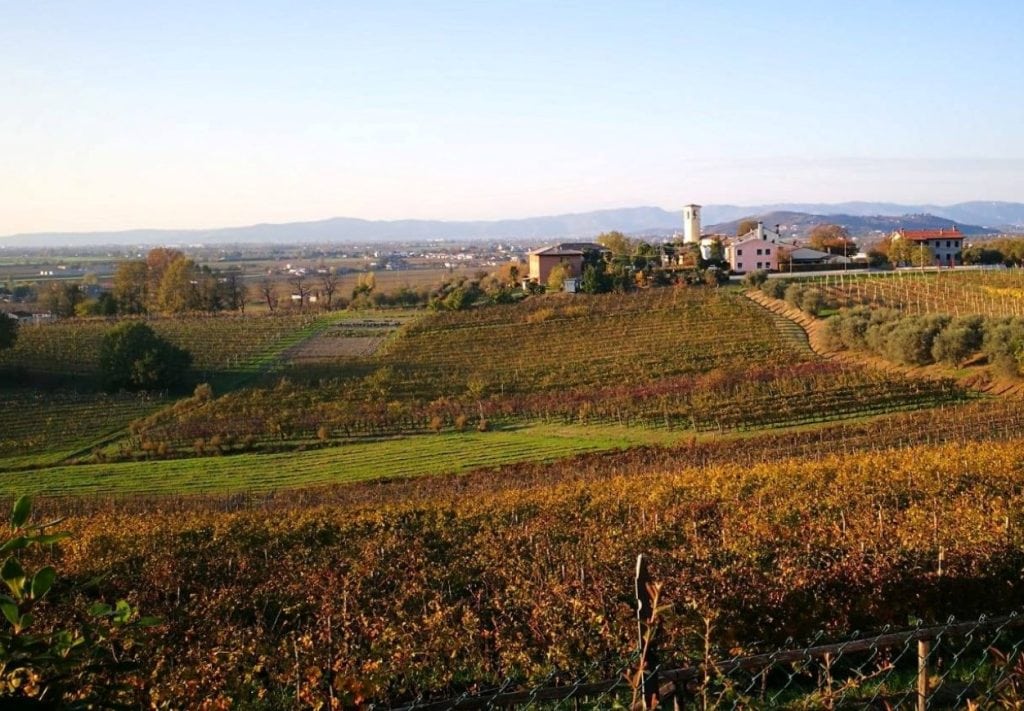
photo: www.facebook.com/vignaroda/
The Vigna Ròda winery of Gianni Strazzacappa lies on the western slopes of the Euganean Hills, about twenty hectares where Bordeaux red grape varieties dominate. What was once a family farm dedicated to simple and unambitious production, has with Gianni made a significant leap forward and today Vigna Ròda is one of the most interesting realities in the Euganean complex. Here we highlight the Fior d’Arancio Spumante Dolce Praesèo 2023 for its excellent value for money.
Although not an easy wine to find, the Cóvolo by Paolo Brunello of the Vignale di Cecilia winery has become a classic in our publication, a wine that every year represents a bridge between simplicity and character. Thanks to the territory and the producer's skill, this Bordeaux blend stands out with its complex aromas of red fruit and spices and a harmonious, lingering sip.

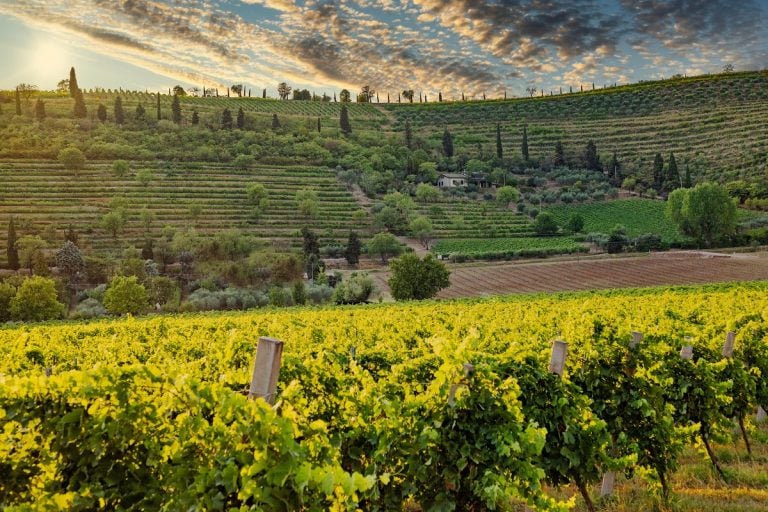
 What you need to know about Italy's new decree on dealcoholised wine
What you need to know about Italy's new decree on dealcoholised wine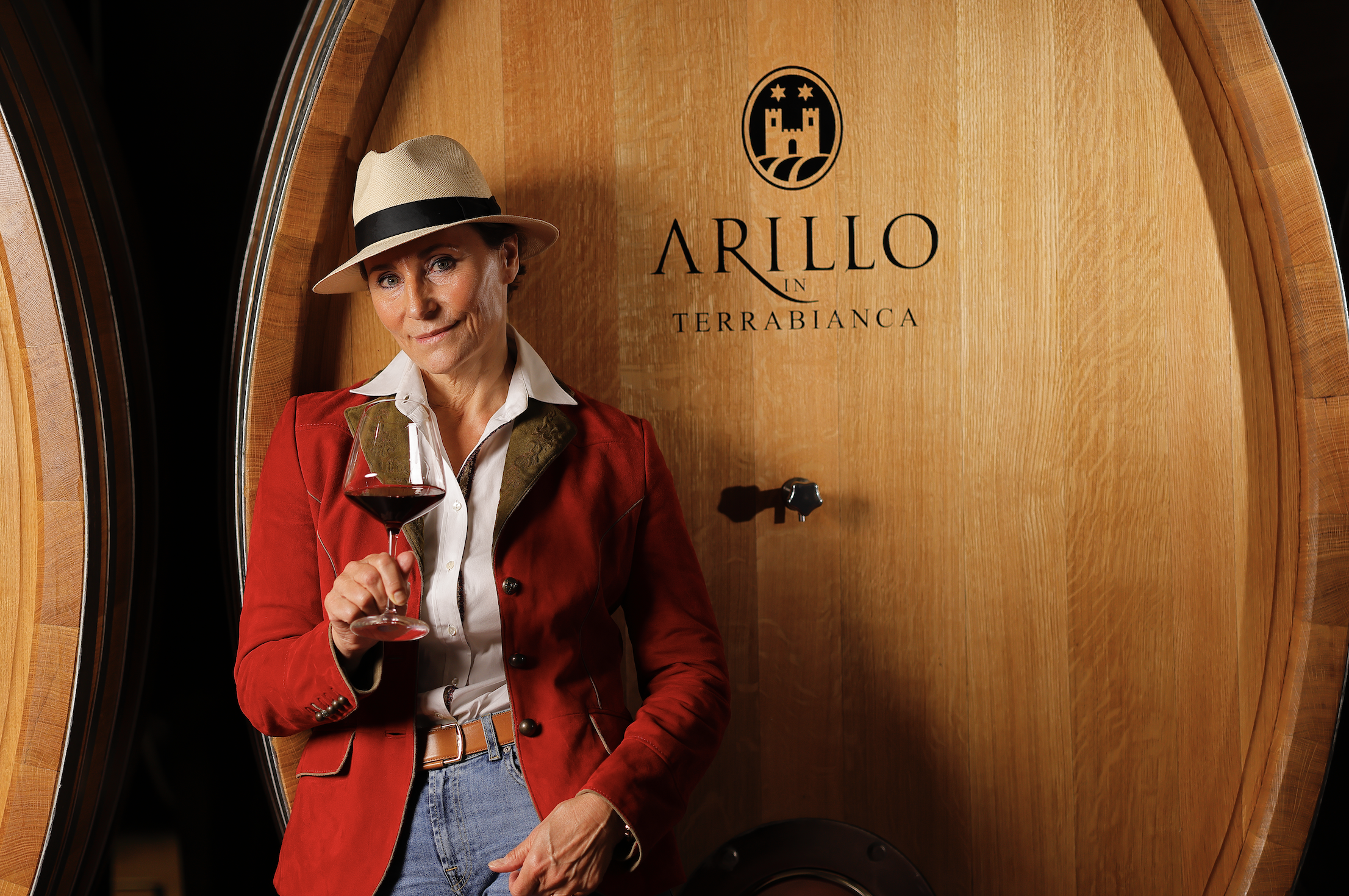 Why Arillo in Terrabianca's organic approach is paying off
Why Arillo in Terrabianca's organic approach is paying off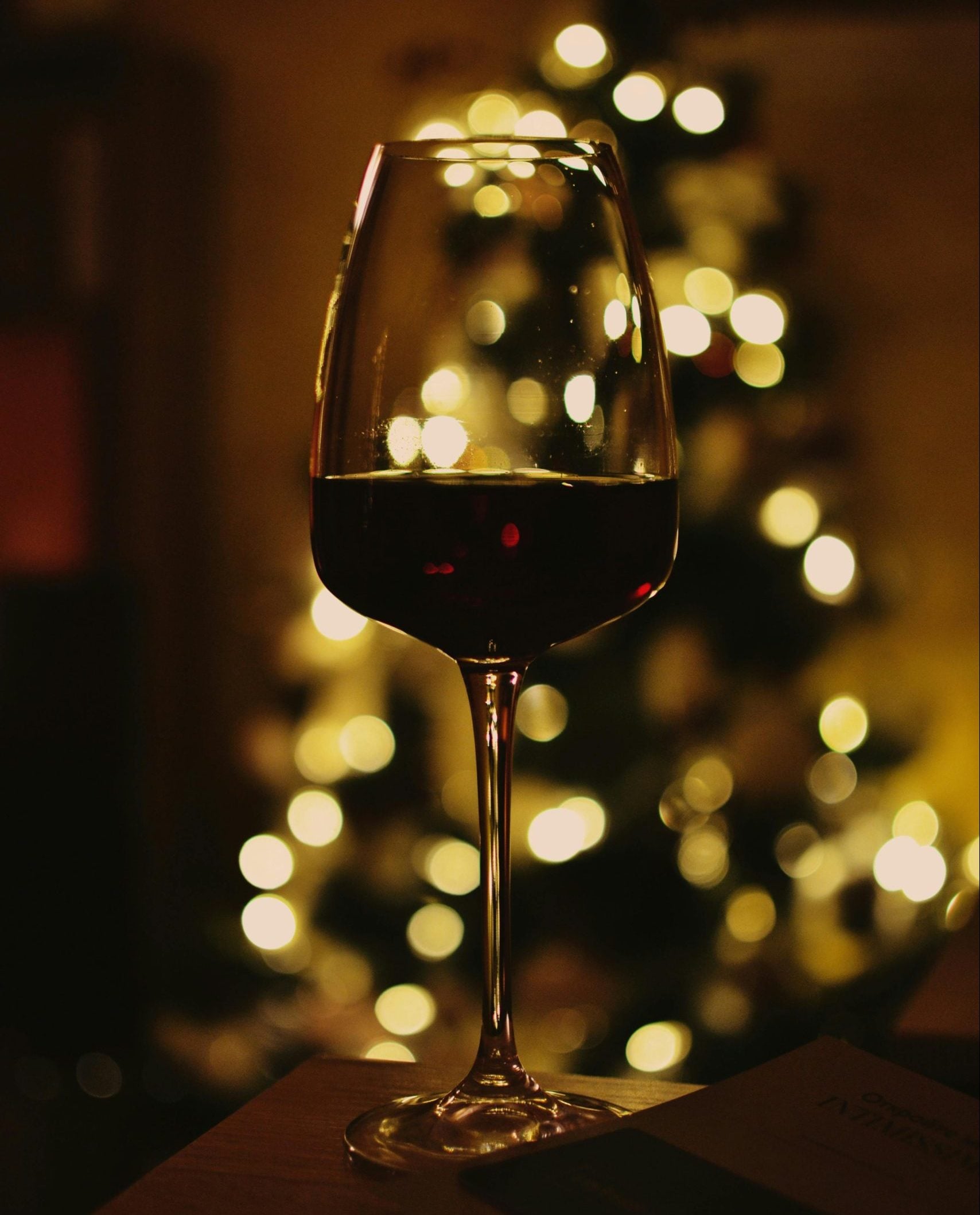 What do sommeliers drink at Christmas?
What do sommeliers drink at Christmas? The alpine hotel where you can enjoy outstanding mountain cuisine
The alpine hotel where you can enjoy outstanding mountain cuisine
